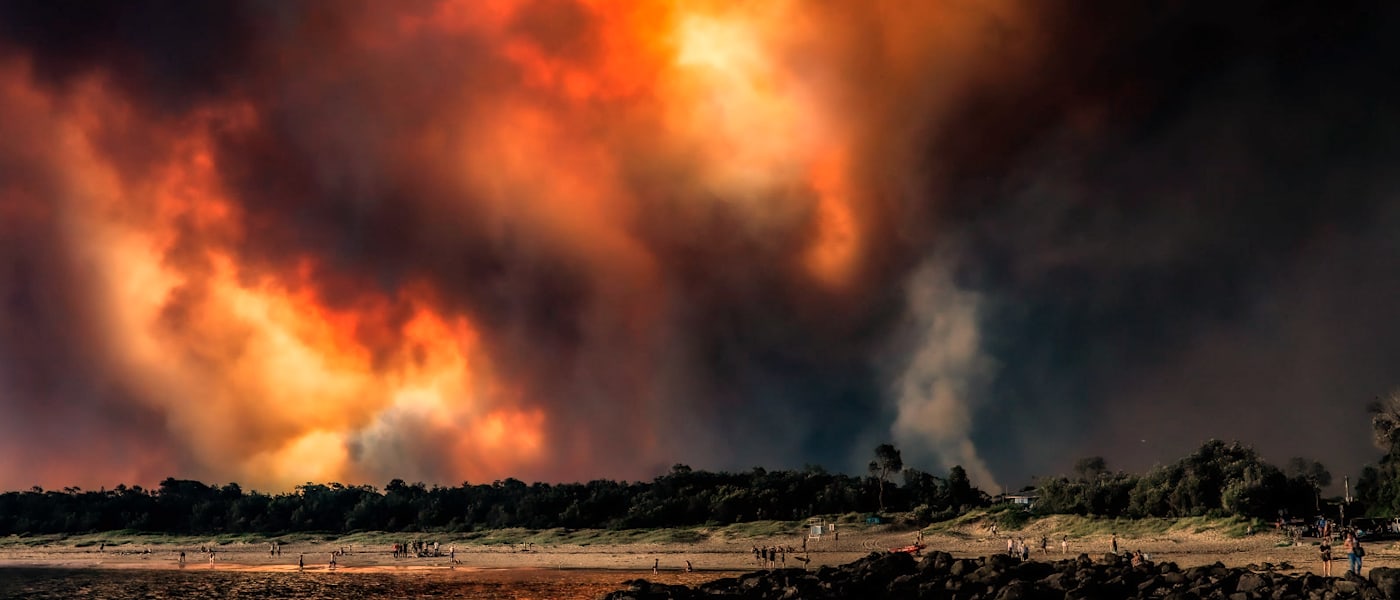Browsing the Requirements: Your Guide to Getting a BAL Report
Wiki Article
Best Practices in Bushfire Administration for Comprehensive Fire Protection
In the realm of bushfire management, the mission for detailed fire defense requires a precise method that includes numerous important facets. As we browse via the subtleties of these best techniques, an exploration into the elaborate internet of methodologies and methods awaits, assuring a much deeper understanding of the diverse landscape of bushfire management for comprehensive fire defense.Danger Assessment and Preparation
In bushfire management for fire defense, the preliminary step involves performing an extensive risk analysis and establishing an extensive strategy to alleviate potential threats. Danger analysis is an essential process that involves determining, evaluating, and reviewing prospective dangers that could bring about a bushfire. This evaluation considers different variables such as weather, topography, fuel lots, and human tasks in the location. By understanding these dangers, fire defense authorities can prioritize locations that are most susceptible to bushfires and designate sources properly.By having a distinct plan in place, emergency situation solutions can act quickly and effectively to protect lives, building, and the setting throughout a bushfire outbreak. Effective threat evaluation and planning are basic parts of bushfire monitoring for making sure detailed fire defense.
Plants Administration Strategies
After carrying out a thorough risk assessment and creating a comprehensive plan for bushfire administration, the emphasis changes to carrying out reliable vegetation management methods. Vegetation management plays a crucial role in decreasing the intensity and spread of bushfires.Along with developing defensible area, recommended burning is one more essential greenery management strategy. Suggested burns entail intentionally setting fires under regulated conditions to reduce the build-up of gas, lower the chance of high-intensity wildfires, and advertise environment health. By purposefully melting areas with excess vegetation, gas levels are reduced, making it harder for fires to spread out quickly and uncontrollably.

Neighborhood Interaction and Education And Learning
Efficient area involvement and education and learning are crucial components in building a resilient and aggressive technique to bushfire monitoring. By entailing area members in the preparation and execution of bushfire management strategies, stakeholders end up being active participants in safeguarding their areas and homes. Area involvement promotes a sense of common duty and equips residents to take possession of their safety and security.Education plays a vital role in gearing up people with the understanding and skills required to alleviate bushfire dangers efficiently. Providing instructional resources ablaze avoidance, emptying treatments, and the value of early detection can significantly boost area readiness. Educating homeowners on the regional bushfire environment, consisting of fire habits and risk variables, allows them to make educated decisions during high-risk scenarios.
Via continuous involvement and education and learning initiatives, areas can establish a collective understanding of bushfire hazards and job collaboratively to lessen the influence of wildfires. By promoting a society of preparedness and durability, community members can enhance their capability to react efficiently to bushfire emergency situations and safeguard both lives and home.

Early Detection and Warning Equipments
Neighborhood interaction and education work as foundational columns in establishing proactive bushfire administration practices, preparing explanation for the implementation of durable early discovery and warning systems. Early discovery and warning systems are important components in minimizing the impact of bushfires on areas and the atmosphere. These systems encompass a series of strategies and innovations intended at identifying and alerting authorities and homeowners to possible fire break outs swiftly and successfully.One crucial element of early detection systems is the usage of sophisticated tracking technologies such as satellite images, drones, and climate terminals to discover indications of prospective fire ignition. These technologies provide real-time information that can be assessed to identify fire-prone areas and trigger early cautions. In addition, the combination of community-based tracking networks and automated sharp systems can boost the effectiveness of early discovery initiatives by entailing residents in reporting prospective fire dangers and obtaining prompt warnings.
Efficient early detection and caution systems depend on a multi-faceted approach that incorporates technical advancement, neighborhood participation, and quick emergency reaction procedures to make sure the prompt and coordinated administration of bushfire occurrences. By purchasing these systems and promoting cooperation in between stakeholders, neighborhoods can enhance their strength to bushfires and lessen the associated risks.
Emergency Situation Response and Emptying Strategies
A well-coordinated and thorough emergency action and emptying strategy is necessary for successfully safeguarding lives and building throughout bushfire Our site occurrences. These strategies need to be carefully crafted, taking into consideration aspects such as the topography of the location, the density of vegetation, and the potential speed and instructions of the fire's spread.One critical facet of an emergency action plan is the facility of clear communication networks to disseminate precise and prompt information to locals and emergency situation -responders. This can consist of making use of sirens, mobile notifies, social media, and community conferences to guarantee that everyone is informed and knows what activities to take.
Evacuation paths have to be pre-identified and on a regular basis maintained to guarantee they are obtainable during emergencies. Furthermore, designated emptying facilities ought to be developed to provide shelter, clinical assistance, and support solutions to evacuees.
Regular drills and exercises are crucial to acquaint locals with emptying treatments and test the performance her latest blog of the plan. By constantly updating and examining emergency situation reaction and emptying strategies, areas can enhance their readiness and durability despite bushfire hazards.
Conclusion
In final thought, efficient bushfire monitoring calls for an extensive technique that consists of threat assessment, greenery monitoring, area engagement, early detection systems, and emergency situation response plans. By carrying out these finest techniques, areas can better safeguard themselves from the damaging impacts of bushfires - BMP. It is vital to focus on positive procedures to alleviate the threats posed by bushfires and ensure the safety and well-being of individuals and communities at riskAfter conducting a detailed threat analysis and creating a detailed plan for bushfire management, the focus changes to carrying out efficient plants administration techniques.Effective area involvement and education and learning are crucial elements in developing a resilient and proactive technique to bushfire administration. By involving area participants in the preparation and application of bushfire management techniques, stakeholders become active individuals in securing their communities and homes.Community involvement and education and learning serve as foundational columns in establishing proactive bushfire monitoring methods, laying the groundwork for the execution of durable early discovery and warning systems.In final thought, effective bushfire monitoring requires a thorough technique that consists of danger assessment, plant life administration, community interaction, very early detection systems, and emergency situation reaction strategies.
Report this wiki page